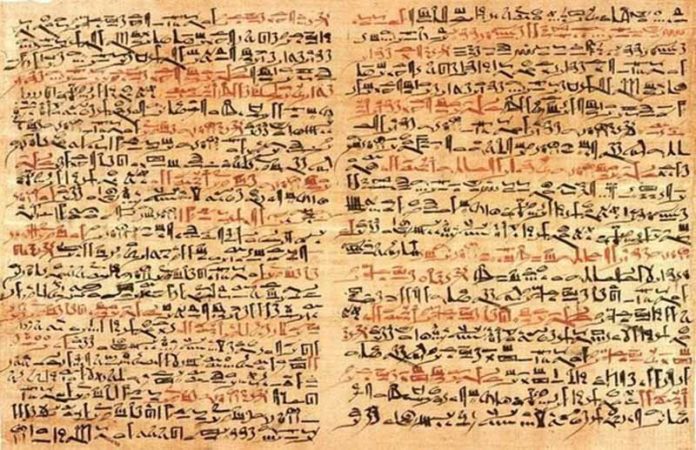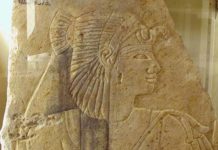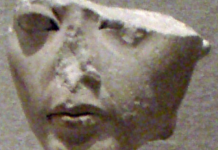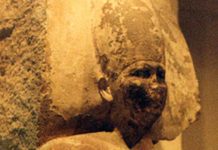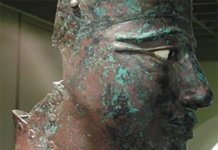Papyrus is an Egyptian water plant that has enabled man to preserve from oblivion the records of dynasties long since passed into history. The reed-like plant was used by ancients for a variety of practical purposes in addition to the most important one—the manufacture of the crude but long enduring papyrus rolls which modern research has brought to light.
It served also as a material for mats, sandals and sail cloth for light skiffs. Even the brownish flowers were utilized to form garlands to adorn the shrines of the Egyptian gods. The little arc in which the mother of Moses concealed her son is believed to have been made of papyrus.
From Ancient Paper
The papyrus, or ancient paper, of the Egyptians was made of strips of the pith arranged in layers. It appears that the earliest monuments in the shape of long, rectangular sheets. The writer used to reed called kash, with red or black in this formula. The sheets were first rolled and tied with string. Later they were bound together like the modern books. These rolls and sheets varied in dimensions. In many instances, they reached a length of 144 feet. When newly prepared, the papyrus was white, but time has turned those which have been preserved light or dark brown, and age has made them very brittle.
For a long time, the city of Alexandria jealously guarded the monopoly of preparing the paper, and the refusal of the Egyptians to supply it to Europe was one of the causes which led to the employment of substitutes. After the 12th century, papyrus was superseded by parchment and by paper made of rags.
To Modern Paper
A king in the ancient country of Asia Minor, unable to obtain papyrus, returned to a former custom of preparing the skins of goats, sheep and calves as writing paper, called parchment. The Chinese manufactured paper at least two centuries before the birth of Christ and passed on their secret to the Arabs, who introduced the art into Spain in the middle of the twelfth century. This early paper is referred to by writers of the period as cloth parchment, known as vellum.
By the second half of the fourteenth century, crude handmade paper for literary purposes had become general in Western Europe, and vellum was gradually driven out. The earliest preserved English manuscript bears the date of 1309, but paper was not manufactured until the beginning of the sixteenth century. In America, a mill was set up near Philadelphia in 1690, but a good many years elapsed before paper making machinery was perfected.


